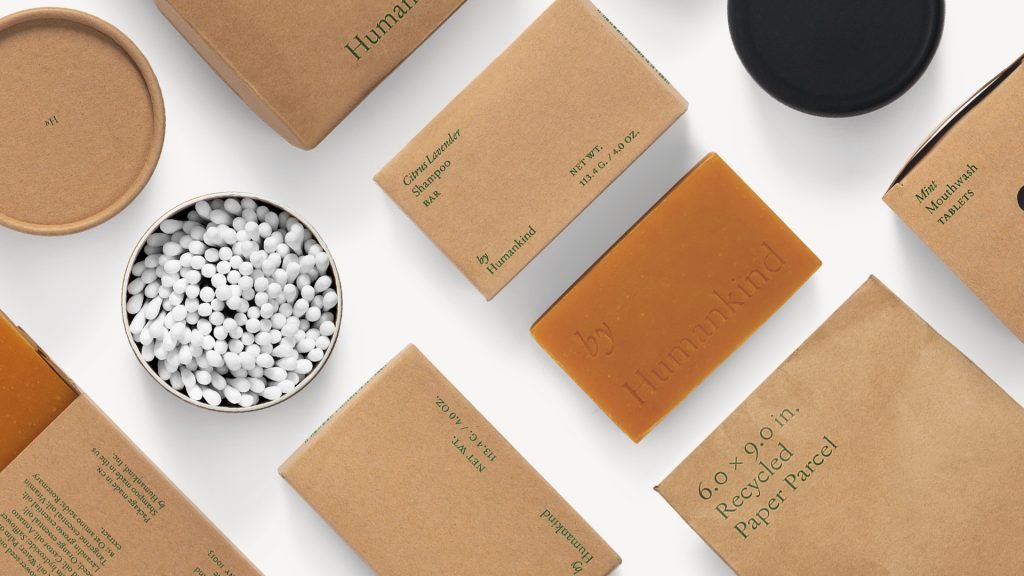How to truly embrace eco-branding without greenwashing
eco-responsible tips
Greenwashing deceives us with a veil of eco-friendliness – a clever distraction that hides ongoing planetary harm and lets the culprits escape accountability.
Dancing in the green spotlight
In a world increasingly conscious of its environmental footprint, brands are under the spotlight. Consumers are not just looking for quality products; they seek brands with a purpose, a story, and, most importantly, a commitment to sustainability. But how can your brand ensure it’s genuinely embracing ethical practices without falling into the trap of greenwashing? Let's delve into the heart of authentic sustainability.
Unmasking greenwashing: the deceptive mirage of fake eco-branding
Greenwashing is like that friend who claims they're on a diet but sneaks in a chocolate bar when no one's looking. Greenwashing is when companies exaggerate or falsely claim to be environmentally friendly. It's a marketing tactic, but it's not genuine eco-branding. It's pretending to be green without truly committing. Authentic eco-branding, on the other hand, is rooted in real actions, not just words.
The pillars of authentic eco-conscious branding design
Refined and smart design: Just as we at GT Studio believe, eco-branding should be elegant. It's about merging aesthetics with ethics, creating designs that not only look good but do good. By designing with the environment in mind, we reduce excess waste.
Ethical purpose: Brands should have a clear mission that goes beyond profit. Whether it's reducing waste, supporting sustainable suppliers, or educating consumers, the purpose should be evident.
Sustainable packaging: It's not just about what's inside; it's about how it's presented. Sustainable packaging is a testament to your brand's commitment to the environment.
By Humankind: This brand is known for its dedication to reducing single-use plastic in their packaging. They offer a range of personal care products, including deodorant, mouthwash, and shampoo, all designed to minimize waste. Their deodorant, for example, comes in refillable containers, and their mouthwash is in tablet form to avoid the use of plastic bottles.
Photo: Courtesy of Lumi
The everyday actions that matter
Every choice a brand makes leaves a mark on the planet. From the materials used to the manufacturing process, each decision impacts the environment. Your brand should be conscious of these everyday actions, ensuring they align with sustainability.
Seed is doing it right: each component of its packaging systems is designed to protect its products and be gentler on our Earth. Made with components such as Biodegradable Algae Paper, Biodegradable PaperFoam, Refillable Glass Jar, Refillable Aluminum Container, and Biofilm, they really went above & beyond.
Photo: Courtesy of Seed©️
Make sustainability more than just a buzzword - make it your brand's authentic story.
The authenticity compass
Navigating the world of sustainability can be tricky. But with transparency, education, and genuine commitment as your compass, you'll always find true north.
Certifications: While not a necessity, certifications can provide an added layer of trust. They show that a third party has verified the brand's claims.
Education: Instead of just claiming to be green, brands should educate their consumers. Share the why and the how behind every sustainable choice.
Transparency: Brands should be open about their sustainability efforts, even if they're not perfect. It's about the journey and the commitment to improvement.
LIV Botanics’ educates their customers: their primary packaging is made with elephant grass fibres grown close to the production site and is totally glueless and effortlessly recyclable.
View the full project here - Designed by Giada Tamborrino Studio
Design: the heartbeat of eco-branding
Design isn't just about aesthetics; it's the heartbeat of a brand. And when that heartbeat is in sync with sustainability, magic happens. Elegant design and sustainability are not mutually exclusive. In fact, they go hand in hand. A well-designed product or package not only appeals to consumers but also reduces waste and environmental impact.
RUA Nordic Beauty - We introduced a new refill system to tackle the plastic soup problem: the refill glass bottle comes with an aluminium cap, which can be easily recycled. And by reusing the same dropper pipette over and over, we reduce plastic waste substantially, keeping our planet clean from microplastics.
View the full project here - Designed by Giada Tamborrino Studio
Inspiring through brand stories
Every brand has a story. Conscious brands should share theirs, highlighting the passion, commitment, and actions behind their sustainability efforts. It's about connecting with consumers on a deeper level.
“From formulation within our supply chain to packaging and social impact, Cradle to Cradle Certified® provides us with a credible, independent improvement framework to confirm that our sustainable approach is the right one. Having this good design in place ensures good business can happen.” - Jo-Anne Chidley | Founder & CEO
Photo: Courtesy of BeautyKitchen
The ouroboric circle of sustainability
Sustainability is a continuous cycle. As brands embrace ethical practices, they inspire their consumers, who in turn demand more sustainable options, pushing brands, retailers, and manufacturers to further their efforts.
Unmasking beauty: greenwashing tactics in the cosmetics industry
Greenwashing is prevalent in the beauty industry because there's a growing demand for natural and eco-friendly products. Brands want to tap into this market, but not all are willing to make the necessary changes to their products.
These examples highlight the importance of transparency and honesty in marketing and branding, especially when it comes to sustainability claims.
SKKN’s refill controversy
Greenwashing Claim:
Kim Kardashian’s new skincare line, SKKN, promoted a refill initiative that was criticized for not reducing packaging waste.
Reality:
A video demonstrated how to refill the new cleanser, but the packaging appeared wasteful.
Lesson:
Ensure that refill systems or other packaging marketed as sustainable genuinely minimize environmental impact. Avoid vague terms like ‘sustainable’ or ‘eco’.
Kim Kardashian’s new skincare line, SKKN, promoted a refill initiative that was criticized for not reducing packaging waste.
A video demonstrated how to refill the new cleanser, but the packaging appeared wasteful.
Ensure that refill systems or other packaging marketed as sustainable genuinely minimize environmental impact. Avoid vague terms like ‘sustainable’ or ‘eco’.
L’Oreal's "more sustainable" bottle
Greenwashing Claim:
L’Oréal claimed its Elvive Full Restore 5 shampoo pack was ‘more sustainable’ without providing clear context.
Reality:
The product featured the claim ‘100% recycled plastic bottle’, but the bottle’s cap was not made from waste materials.
Lesson:
Specify what you're comparing explicitly and ensure that products being compared are like-for-like. Only make ‘100% recycled’ claims when all parts of a product's packaging are made from waste materials.
L’Oréal claimed its Elvive Full Restore 5 shampoo pack was ‘more sustainable’ without providing clear context.
The product featured the claim ‘100% recycled plastic bottle’, but the bottle’s cap was not made from waste materials.
Specify what you're comparing explicitly and ensure that products being compared are like-for-like. Only make ‘100% recycled’ claims when all parts of a product's packaging are made from waste materials.
Head & Shoulders’ beach plastic
Greenwashing Claim:
Head & Shoulders marketed their Ocean Clean Bottle as recyclable.
Reality:
While their bottles can be recycled, they are still working on making their caps recyclable. Most importantly, even though ocean and beach clean-ups can heighten awareness, they won't be the solution to the plastic dilemma if the surge in plastic production by companies persists.
Lesson:
Making products out of collected marine plastic does nothing tackle the root cause of the problem. Be transparent about recyclability claims. If only parts of the packaging are recyclable, communicate that clearly.
Head & Shoulders marketed their Ocean Clean Bottle as recyclable.
While their bottles can be recycled, they are still working on making their caps recyclable. Most importantly, even though ocean and beach clean-ups can heighten awareness, they won't be the solution to the plastic dilemma if the surge in plastic production by companies persists.
Making products out of collected marine plastic does nothing tackle the root cause of the problem. Be transparent about recyclability claims. If only parts of the packaging are recyclable, communicate that clearly.
Bondi Sands’ sunscreen claims
Greenwashing Claim:
Bondi Sands advertised its sunscreens as “reef friendly.”
Reality:
While the products are free from oxybenzone and octinoxate, they were found to include other harmful ingredients, such as avobenzone, homosalate, octisalate, and octocrylene.
Lesson:
Brands should ensure that their terms are clearly defined and that these definitions are easily accessible to shoppers. Using third-party certifications can also provide more credibility to claims.
Bondi Sands advertised its sunscreens as “reef friendly.”
While the products are free from oxybenzone and octinoxate, they were found to include other harmful ingredients, such as avobenzone, homosalate, octisalate, and octocrylene.
Brands should ensure that their terms are clearly defined and that these definitions are easily accessible to shoppers. Using third-party certifications can also provide more credibility to claims.
L'Occitane's not-so-eco-friendly refills
Greenwashing Claim:
L'Occitane promotes their Eco-recharge refill range as an eco-friendly alternative, offering plastic pouches for refills.
Reality:
While the brand might be replacing their bottles, which have some recyclability, with these refill pouches, the pouches themselves are unrecyclable and only last for a limited number of refills. Additionally, their in-store refill stations, which could be a more sustainable solution, are limited to just few out of 50+ stores in the UK
Lesson:
A genuine commitment to sustainability requires comprehensive solutions that address the entire lifecycle of a product, not just partial measures that might appear eco-friendly at first glance.
L'Occitane promotes their Eco-recharge refill range as an eco-friendly alternative, offering plastic pouches for refills.
While the brand might be replacing their bottles, which have some recyclability, with these refill pouches, the pouches themselves are unrecyclable and only last for a limited number of refills. Additionally, their in-store refill stations, which could be a more sustainable solution, are limited to just few out of 50+ stores in the UK
A genuine commitment to sustainability requires comprehensive solutions that address the entire lifecycle of a product, not just partial measures that might appear eco-friendly at first glance.
Crafting an authentic legacy, one brand at a time
In the grand tapestry of life, every thread counts. Brands have the power to weave a legacy that's not just beautiful but also sustainable. So, let's pick up the needle and thread of authenticity and craft a future that generations will be proud of.
The authentic path to sustainability
In the world of branding, authenticity is key. Brands that truly embrace eco-conscious practices, avoiding greenwashing and genuinely committing to sustainability, will not only make a lasting positive impact on the planet but also win the trust of their consumers.
🧭 The Eco-Luxury Compass: A Framework for Conscious Branding
Navigating sustainability in branding can be overwhelming. With so many materials, claims, and changing regulations, where do you start?
To help brands cut through the noise and make intentional, impactful choices, I created the Eco-Luxury Compass—a practical framework that breaks down sustainable branding into actionable steps.
💡 Inside the Guide:
✅ How to assess your packaging's true impact
✅ Understanding the difference between biodegradable, recyclable, and compostable materials
✅ How to align sustainability with a premium brand experience
🌿 Whether you're launching a new brand or refining your existing one, this guide will help you prioritize sustainability without sacrificing quality, aesthetics, or functionality.
Final Thoughts: Taking Action Beyond Greenwashing
Sustainability isn’t about looking green—it’s about being green in a way that aligns with your brand’s values. Authenticity, transparency, and design-led solutions are the way forward.
If you’re ready to craft a brand experience that is both luxurious and planet-friendly, let’s create something extraordinary together.
📩 Get in touch to start your project, or explore the Eco-Luxury Compass to kickstart your journey.
Sources:Share on











